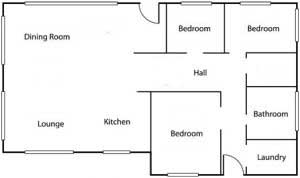Many lives can be saved with the proper  installation of smoke alarms. Sadly, however, statistics show that many lives are lost because people do not have a working smoke alarm.
installation of smoke alarms. Sadly, however, statistics show that many lives are lost because people do not have a working smoke alarm.
“Smoke alarms provide a critical early warning of fire, allowing additional time to escape,” says the National Fire Protection Association. Their 2009-2013 study showed that “fires in homes with no smoke alarms caused an average of 940 deaths per year (38% of home fire deaths). An additional 510 people per year (21% of home fire deaths) were fatally injured in which smoke alarms were present but failed to operate.
“Three out of five home fire deaths resulted from fires in properties with no or no working smoke alarms,” the study continues. “Almost all households indicate having smoke alarms, yet smoke alarms were present in slightly less than three-quarters (73%) of reported home fires and operating in roughly half (53%).” The death per 100 reported fires was more than twice as high in homes with no or no working smoke alarms.
- Two out of five home fire deaths resulted from fires in which no smoke alarms were present.
- One out of five home fire deaths was caused by fires where smoke alarms were present but failed to operate.
The report goes on to say that hardwired smoke alarms were more likely to operate than battery-powered ones, yet most homes still only have battery-operated alarms. Reported deaths from hardwired smoke alarms were reported at 28% of the associated deaths as opposed to 67% of the associated deaths with battery-operated alarms.
Proper Installation of Smoke Alarms
Smoke alarms should be installed on every level of the house and outside each bedroom. In new homes, according to the NFPA 101® Life Safety Code®a smoke alarm is required in each bedroom. It must be hard-wired with a battery backup and interconnected with all the other smoke detectors so that if one goes off, they all do.
- Install a smoke alarm inside each bedroom, outside each sleeping area and on every level of the home, including the basement.
- On levels without bedrooms, install alarms in the living room, den or family room, or near the stairway to the upper levels, or in both locations.
- Basement smoke alarms should be installed on the ceiling at the bottom of the stairs leading to the next level.
- Install a smoke alarm at least 10 feet from a cooking appliance to minimize false alarms when cooking.
- Do not install a smoke alarm near windows, doors, or ducts where drafts may interfere with their operation.
- The average life of a smoke alarm is 10 years; replace it every 10 years.
Mounting a Smoke Alarm
- Mount smoke alarms high on calls or ceilings. Ceiling mount is optimal. Wall-mounted alarms should be no more than 12” away from the ceiling.
- For pitched ceilings, place the alarm within 3 feet of the peak, but not within the apex (minimum 4” down).
Related: Installing and maintaining smoke alarms
Testing a Smoke Alarm
- Use the “test” button to test the alarm once a month
- Let everyone in the home hear the smoke alarm, and understand what it means.
- Do not paint or put stickers on the smoke alarm, or place objects on or around it. This will impair its function.
- Clean smoke alarms according to manufacturer directions.
- Replace the battery at least once a year, and immediately if the alarm begins to chirp.
If one is a tenant, and not the homeowner, it is the tenant’s responsibility to maintain the smoke alarm. In addition, as established by the Statewide Fire Prevention Code, “A tenant should not remove or tamper with a properly-functioning smoke alarm installed by the landlord, including removing any working barriers, so as to render the alarm inoperative.”
Först Consulting Group
We at Först Consulting Group are concerned with keeping the residents of Northern Virginia and Washington, D.C. safe. That’s why we offer a number of homeowner services, like homeowner advocacy and homeowner inspections, to serve as an ally and a trusted resource for homeowners.
If you’d like us to check the proper installation of smoke alarms or smoke alarms systems in your home, please give us a call. Don’t wait until there’s a disaster to find out whether your alarm system is working properly. Contact Först Consulting Group today.




